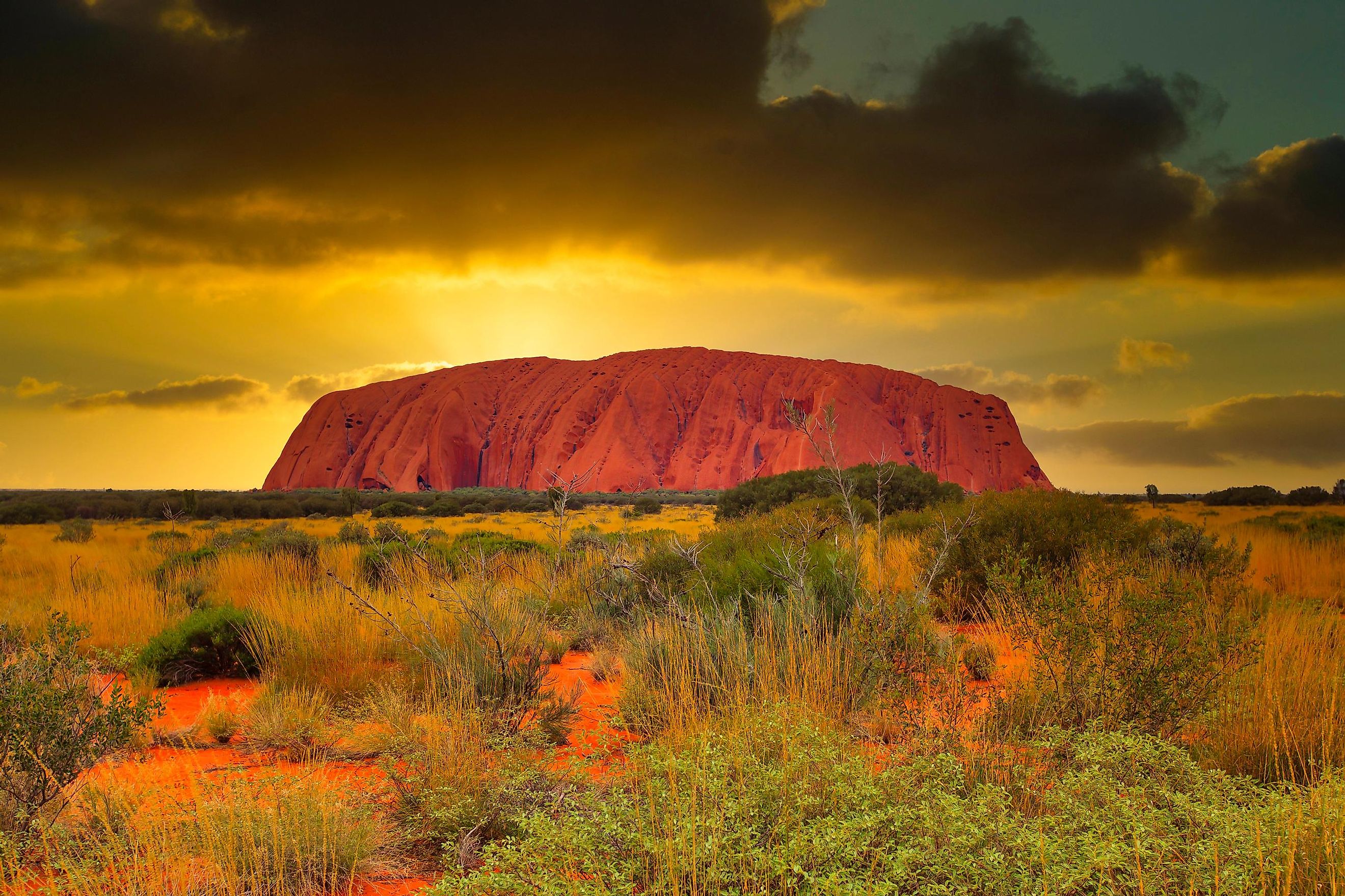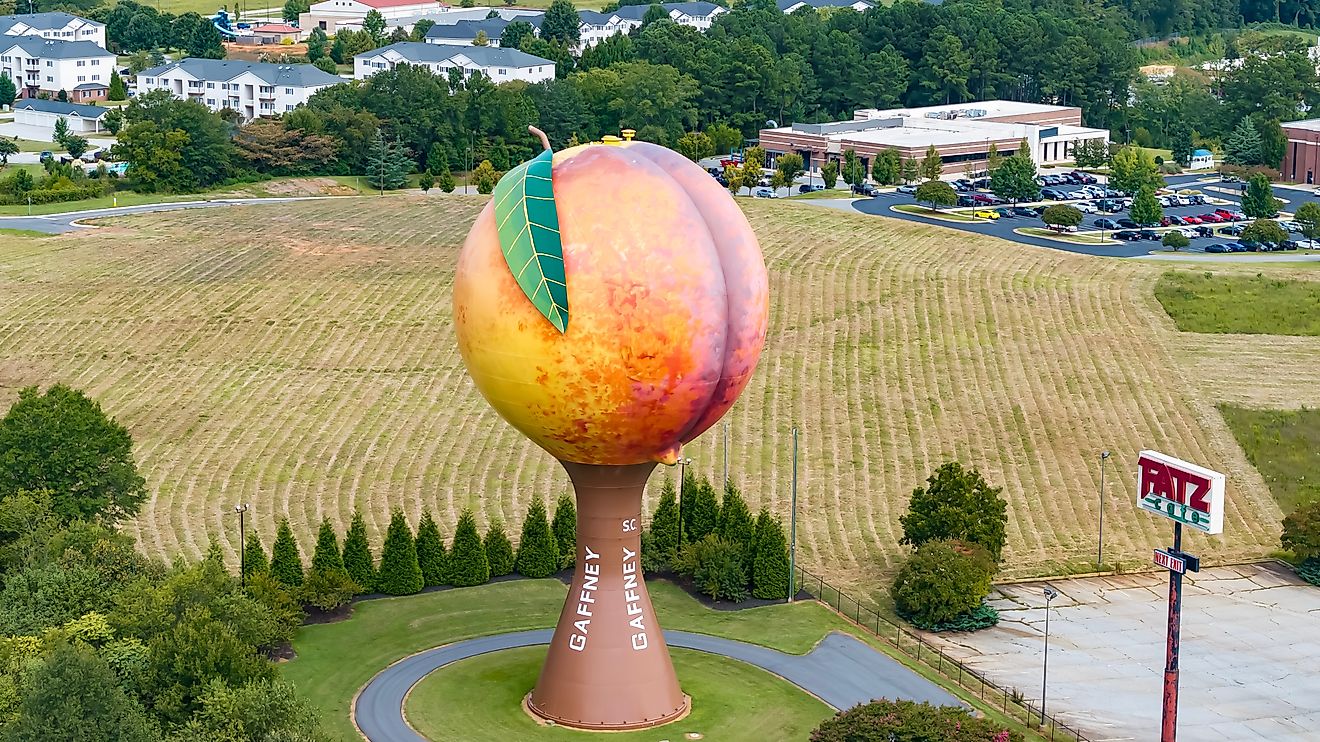
Uluṟu-Kata Tjuṯa National Park, Australia
The continental island nation of Australia is blessed with a plethora of geographical features like forests, alpine regions, deserts, coral reefs, and unique geological formations. The Northern Territory is a large territory located in the central northern part of the country. Several protected areas are found in the Northern Territory, which in total occupy about 24.8% of the territory’s land area.
Situated in the Northern Territory is the Uluṟu-Kata Tjuṯa National Park. The park is located approximately 1,943 km to the south of the territorial capital city of Darwin and 440 km to the southwest of the town of Alice Springs by road. The park covers an area of 1,326 km2 and hosts two spectacular landforms: Ayers Rock (Uluru) and Kata Tjuta (Olgas). Due to its immense natural and cultural significance, the Uluṟu-Kata Tjuṯa National Park was designated a UNESCO World Heritage Site.
Geography

The two major rock formations, Uluru (Ayers Rock) and Kata Tjuta (Olgas), form a major part of the Uluṟu-Kata Tjuṯa National Park. Uluru (Ayers Rock) is a large sandstone monolith that rises to an elevation of 348 m and has a circumference of 9.4 km. This giant rock changes hues depending on the sun’s position, specifically at dawn and dusk. Situated about 40 km to the west of the Uluru Rock is the Kata Tjuta (Olgas). The Kata Tjuta (Olgas) is a group of large 36 domes that cover an area of 21.68 km2. Of these 36 domes, Mount Olga, which rises to an elevation of 546 m, is the highest dome. These ochre-colored rocky domes also change their hues during sunrise and sunset, which makes them a sight to behold. Both these rock formations are revered as sacred by Australia’s Indigenous Anangu people.

Geological studies have revealed that approximately 500 million years ago, the entire National Park area was mostly covered by an inland sea. With time, both mud and sand were deposited at the bottom of the sea and resulted in the formation of the sandstone and rocks. It is believed that the domes of Kata Tjuta were formed from the remnants of the sedimentary rocks from the seabed, whereas the Uluru Rock is mainly composed of arkosic sandstone, which contains about 50% feldspar.

The Uluṟu-Kata Tjuṯa National Park experiences a hot and dry climate for most of the year, with high diurnal variations of temperature. Daytime temperatures often exceed 45 °C during the summer months, while the temperatures remain lower during the winter months and drop to -5 °C during the nighttime. The National Park receives an average annual precipitation of 307.7 mm.
However, according to the Aboriginal tribes, there are six seasons in the Uluṟu-Kata Tjuṯa National Park region. These include: Piryakatu, Wiyaringkupai, Itanju, Wanitjunkupai, Tjuntalpa and Wari.
Wildlife

Despite the area’s harsh climatic conditions, the Uluṟu-Kata Tjuṯa National Park has been blessed with rich floral and faunal diversity. It is estimated that there are over 400 floral species in the National Park including desert oaks, mulga trees, eucalyptus, centralian bloodwood, corkwood tree species like grevillea, spinifex, river red gum, different types of wildflowers like foxtails, and rare ferns like the adder’s tongue fern.
Many faunal species are found in the Uluṟu-Kata Tjuṯa National Park. These include the red kangaroos, black-footed rock wallaby, rufous hare wallaby, brushtail possum, marsupial mole, and mulgara, among others. About 73 species of reptiles and four species of amphibians have also been recorded from the National Park. Over 175 species of birds including the black-breasted buzzard, crimson chat, emu, various falcons, the Australian bustard, pied butcherbird, budgerigars, and the black-faced wood swallow.

Some introduced mammal species like the cat, dog, house mouse, rabbit, and camel are also observed in the National Park. These introduced species have severely affected the populations of many native species in the region.
Brief History

It is believed that the Uluru Rock and the domes of Kata Tjuta were formed approximately 350 million years ago. The region was initially inhabited by the Anangu people who have lived there for more than 10,000 years. During the late 19th century, Europeans started to arrive in this region and the European explorers William Christie Gosse and William Ernest Powell Giles were the first Europeans to arrive in the area. In 1872, William Ernest Powell Giles first sighted the Kata Tjuta and named it “Mount Olga” in the honor of Queen Olga of Württemberg. In 1873, William Christie Gosse sighted Uluru and named it “Ayers Rock” after Sir Henry Ayers.
In the late 19th century, several conflicts between the Anangu and the invading Europeans started when the Europeans began to claim lands in the region to practice agriculture. Competition for land and food resources often resulted in violent clashes between the Indigenous people and the new settlers, necessitating frequent police patrols in the region. In 1920, a portion of the area was declared as an Aboriginal Reserve and in 1936, tourists first started arriving in the region. The Ayers Rock National Park was established in 1950. In due course, Kata Tjuta was added to the national park and on January 23, 1958, the Ayers Rock-Mount Olga National Park was established.
On October 26, 1985, Australian government officials handed the deeds to the park area back to the Anangu people, recognizing them as the rightful owners of the land. Its name was also changed to reflect the Indigenous names of the rock formations. Since then, the National Park is jointly administered by the Director of National Parks and the Aboriginal traditional landowners.











